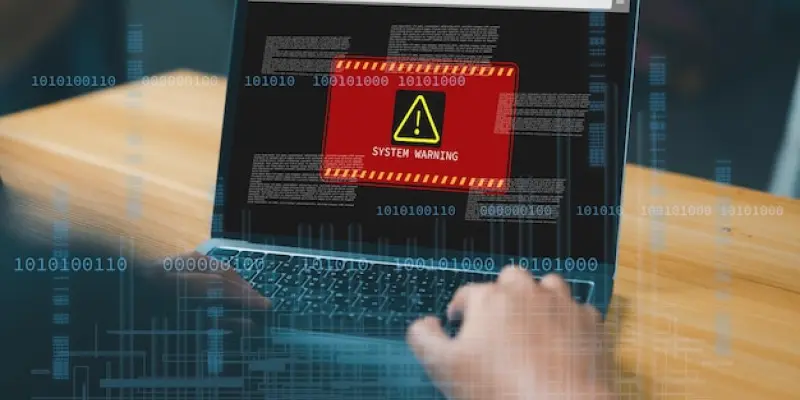In an awe-inspiring development for the cybersecurity industry, researchers have achieved a significant breakthrough by decrypting the notorious Linux/ESXI Akira ransomware without necessitating a ransom payment. This remarkable triumph underscores the relentless efforts of cybersecurity researcher Yohanes Nugroho, who pinpointed a critical weakness within the ransomware’s encryption strategy. The Akira ransomware has boggled many since its emergence in 2023, complicating decryption attempts using an encryption methodology that initially seemed impervious. However, Nugroho’s discovery turned the tide, making this a triumph in the ongoing battle between cybersecurity experts and malicious actors.
Unveiling the Vulnerability in Akira Ransomware
Encryption Dependency on Current Nanosecond Time
Nugroho identified a pivotal vulnerability in the Akira ransomware – it used the current time in nanoseconds as the seed for its encryption process. This reliance on a temporal variable inherently introduces a predictability factor susceptible to brute-force attacks. The Akira variant, particularly troubling due to its sophisticated encryption leveraging four distinct timestamps with nanosecond resolution, initially appeared daunting for decryption efforts. However, by understanding the intricacies of the encryption methodology, researchers made significant headway. Through reverse-engineering the ransomware, it was discovered that Akira utilized the Yarrow256 random number generator to create encryption keys, which were then employed by KCipher2 and ChaCha8 algorithms.
This vulnerability essentially meant that if the exact time of encryption could be reconstructed or closely approximated, it would be possible to reverse the encryption process. The discovery turned out to be a game-changer, providing a tangible foothold for cybersecurity efforts against this menacing ransomware. This methodological breakthrough facilitated the development of practical decryption tools, shifting the paradigm in ransomware decryption endeavors.
CUDA-Optimized Tool for Brute-Force Attacks
To capitalize on the identified vulnerability, Nugroho developed a CUDA-optimized tool designed to harness GPU-accelerated brute-force attacks. This innovative approach utilized the massive computational power of modern GPUs, significantly enhancing the capability to decrypt files encrypted by Akira. Early testing with this tool demonstrated remarkable performance metrics. An RTX 3090 GPU, for example, could manage about 1.5 billion encryption attempts per second. This performance was further amplified by the capabilities of an RTX 4090 GPU, achieving speeds 2.3 times faster than its predecessor.
The explosive power of GPUs in accelerating brute-force attacks radically altered the decryption timeline. Where a single GPU might have taken 16 days to decrypt files originally, employing 16 GPUs could potentially slash this to just 10 hours. This immense reduction in time offers a lifeline to organizations grappling with the aftermath of an Akira ransomware attack. To employ this decryption method effectively, specific prerequisites must be met, including original file timestamps, known plaintext/ciphertext pairs, adequate GPU computing power, and shell.log files that elucidate the ransomware’s execution timeframe.
Leveraging the Breakthrough in Practical Scenarios
Analyzing Real-World Impact
The release of the decryption tool on platforms like GitHub has placed a powerful resource in the hands of cybersecurity professionals worldwide. Organizations previously stranded by the Akira ransomware now have a proactive, practical means to combat the threat without succumbing to ransom demands. This development has the potential to fundamentally disrupt the business model underpinning ransomware attacks. By successfully decrypting files without financially supporting cybercriminal actors, the decryption tool not only offers immediate relief to affected organizations but also poses a long-term threat to the efficacy of ransom-driven cybercrime operations.
The breakthrough represents an evolving dynamic in the ongoing cybersecurity battlefield. Attackers may need to rethink their encryption methodologies, understanding that the persistence and ingenuity of defenders can uncover critical weaknesses in even their most sophisticated malware. This ability to recuperate and restore encrypted files decisively undermines the ransom-based revenue streams that many cybercriminals rely upon.
Future Implications for Cybersecurity
The decryption breakthrough brings renewed hope and confidence to the cybersecurity community, showing that even the most sophisticated ransomware can be outsmarted with persistence and innovation. The success also serves as a potent reminder of the importance of continuous research and collaboration in the cybersecurity field, as experts strive to protect valuable data and maintain digital safety.

